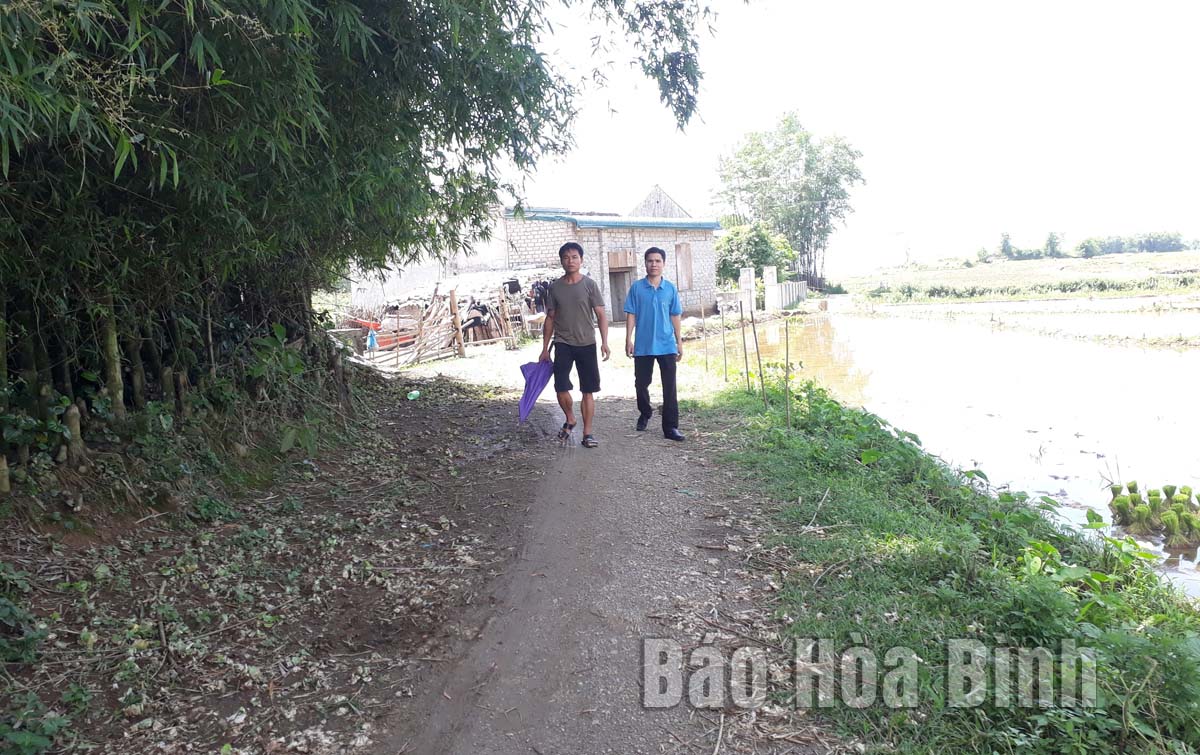
(HBO) - Over the recent years, Tan Lac district has fully and promptly implemented programmes, projects and policies dedicated to mountainous and ethnic-inhabited areas, contributing to improving people's lives, and speeding up poverty reduction and new-style rural area building in the locality.

In the coming time,
Tan Lac plans to invest in transport infrastructure to create a driving force
for economic development in ethnic-inhabited areas. Photo: A road in Tam Bat
hamlet, Phu Cuong commune.
Tan Lac district has all 16 communes and town with 146 out
of the 159 hamlets belonging to mountainous and ethnic-inhabited areas, of
which nine communes and nine hamlets have extremely difficult backgrounds.
Through programmes and projects, hamlets and communes in these areas have got a
facelift.
Bui Thi Hang, deputy head of Tan Lac’s Desk for Ethnic
Minority Affairs, said that through Programme 135 on poverty reduction, many
traffic and clean water works and canals were built in disadvantaged communes,
and mountainous and ethnic-inhabited areas. Many production support projects
have been effectively implemented by the district, contributing to ensuring
people's livelihoods.
In a plan to implement the National Target Programme for
Socio-Economic Development of the Mountainous and Ethnic-Minority Regions in
the 2021-2025 period, the district has set specific goals, in which the average
poverty rate in these areas will be reduced by 2.5 - 3%; and 4-4.5% in the
extremely difficult communes. The district also aims to bring into full play
potential and advantages of localities in these areas, promote innovation and
economic development, ensure social welfare and sustainable poverty reduction,
and gradually narrow the gap in living standards and average income.
To achieve those targets, Tan Lac is determined to step up
disseminations, pay attention to investment in infrastructure. The total
capital demand for implementing the National Target Programme for
Socio-Economic Development of the Mountainous and Ethnic-Minority Regions is
over 1.119 trillion VND (47.7 million USD), of which over 594 billion VND will
be invested in essential infrastructure for production and daily life,
including building roads in hamlets, and those to production zones; bridges,
pipes, and irrigation and electricity works, classrooms, and medical
facilities. This will be an important motivation for Tan Lac district to
improve the quality of life and create positive changes in mountainous and
ethnic minority areas./.
The Department of Education and Training of Hoa Binh province held a conference on March 18 to review the performance of the "Safe and Happy School" Project and set out tasks for 2025. The project, funded by the Taiwan Fund for Children and Families (TFCF), aims to create a safe, inclusive, and supportive learning environment for students. The event saw the attendance of representatives from the TFCF and 26 beneficiary schools.
With over 70% of their workers being women, trade unions across industrial parks (IPs) in Hoa Binh have been actively safeguarding their legal rights and interests while implementing initiatives to improve their income and well-being.
In recent years, the Hoa Binh provincial General Hospital has continuously innovated itself and improved the quality of medical services to meet the increasing needs of local people. With substantial investments in infrastructure and modern equipment, along with a team of highly qualified doctors and nurses, the hospital has gradually established itself as one of the leading medical units in the Northwestern region and a trusted destination for healthcare for people inside and outside the province.
From mastering the fundamentals of programming to achieving national recognition, the Programming Club of the Le Van Tam Primary School (STAR LVT28) in Hoa Binh city has made remarkable strides in the field of robotics.
The Ho Chi Minh Communist Youth Union Committee and the Vietnam Youth Federation chapter of Hoa Binh province organised a programme on March 12 to launch the "Digital Literacy" movement and an online quiz on the resolutions of the Vietnam Youth Federation congresses at all levels, as well as the Politburo's Resolution No. 57-NQ/TW on breakthroughs in the development of science, technology, innovation, and national digital transformation.
As climate change grows more unpredictable, the development of production forests has become essential - not just for economic growth, but for safeguarding the environment and maintaining ecosystem balance. By boosting local incomes, curbing natural disasters, preventing soil erosion, and protecting water resources, these forests play a crucial role in sustainable development.



